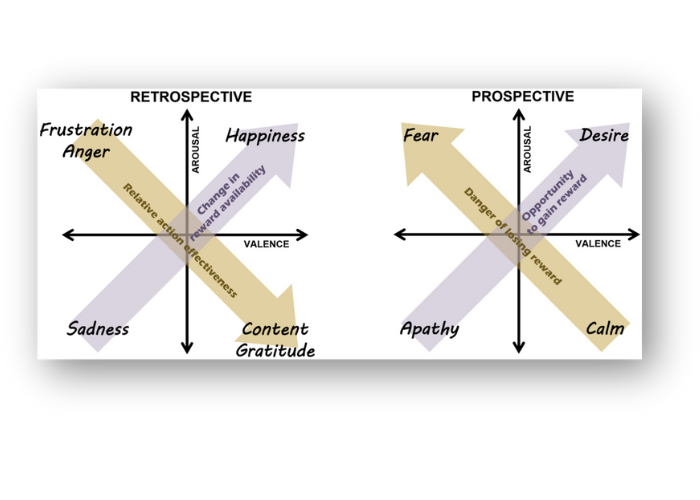The Computational Modeling of Emotion
An exploration of how emotion is modeled in machines through valence, arousal, and computational evaluations.
Computational modeling of emotions involves translating subjective and often messy human feelings into mathematical representations that computers can process. It treats emotions as quantifiable data points within formal systems.
First, it’s worth asking what emotions are. They aren’t just psychological reactions. Emotions are complex, embodied experiences from neurological, physiological, cognitive, and social processes. They help us quickly interpret and respond to the world, especially regarding danger, opportunity, or change.
Emotions are difficult to define because they operate on several levels at once. They are biological events like hormonal changes and neural activity. They are also subjective experiences like feeling joy or grief. At the same time, they show up as behaviors like crying or laughing, and as social concepts shaped by culture, like "schadenfreude" or "hygge." Emotions are universal and highly contextual, changing from person to person and culture to culture.
In How Emotions Are Made, Lisa Feldman Barrett argues that emotions aren’t fixed, universal categories. Instead, they are constructed from more basic feelings like general pleasantness or discomfort, depending on the situation. This matches many computational approaches, which model emotions along scales like valence and arousal instead of using fixed categories.
Illustration of how reward expectation influences the strength and direction of emotional responses. Emotions can be modeled as shifts in perceived value along a reward distribution.
Rafael Calvo’s Oxford Handbook of Affective Computing describes ways to detect emotions using multiple inputs, such as speech, posture, and physiological signals, not just facial expressions. Antonio Damasio’s work in The Feeling of What Happens shows how emotions involve patterns in the body and brain that could, in theory, be modeled computationally.
Building on these perspectives, Ralph Adolphs and Daniel Andler's Emotions as Computations propose that emotions are distinct computational processes.
They break emotions down into three core evaluative functions:
Assessing current states
Guiding actions
Estimating uncertain prospects
Affective dynamics mapped onto computational subsystems. Emotions influence value estimation, policy learning, and planning in artificial agents.
This framework aligns with the idea that emotions aren’t just reactive states but are imperative to decision-making processes, influencing how biological or artificial agents assess and respond to complex environments. By framing emotions as computational evaluations, this approach offers a structured pathway for developing models that encapsulate the multifaceted nature of emotional experiences.
Emotional states are mapped along dimensions of arousal and valence. This grid suggests how different emotions may emerge from evaluating past and future outcomes.
If emotions are essentially patterns of processing that connect sensory input with internal states, then it is at least possible that machines could someday have similar experiences. But this would require more than just recognizing patterns. Machines need systems that combine perception with internal goals, needs, and motivations. They may also need some way to simulate bodily states and connect those simulations to their environment.
Even then, detecting emotions would not be enough. For machines to truly have something like emotions, those patterns would need to affect their behavior in meaningful ways, the same way emotions shape human actions and decisions. That doesn’t mean machines would feel what we feel. Their underlying architecture would create different emotional experiences, like animals experience emotions differently from humans.
If machines develop emotions, they probably won’t be copies of ours. They could end up with emotional systems that are entirely their own. And that might help us better understand what it means to feel anything.







